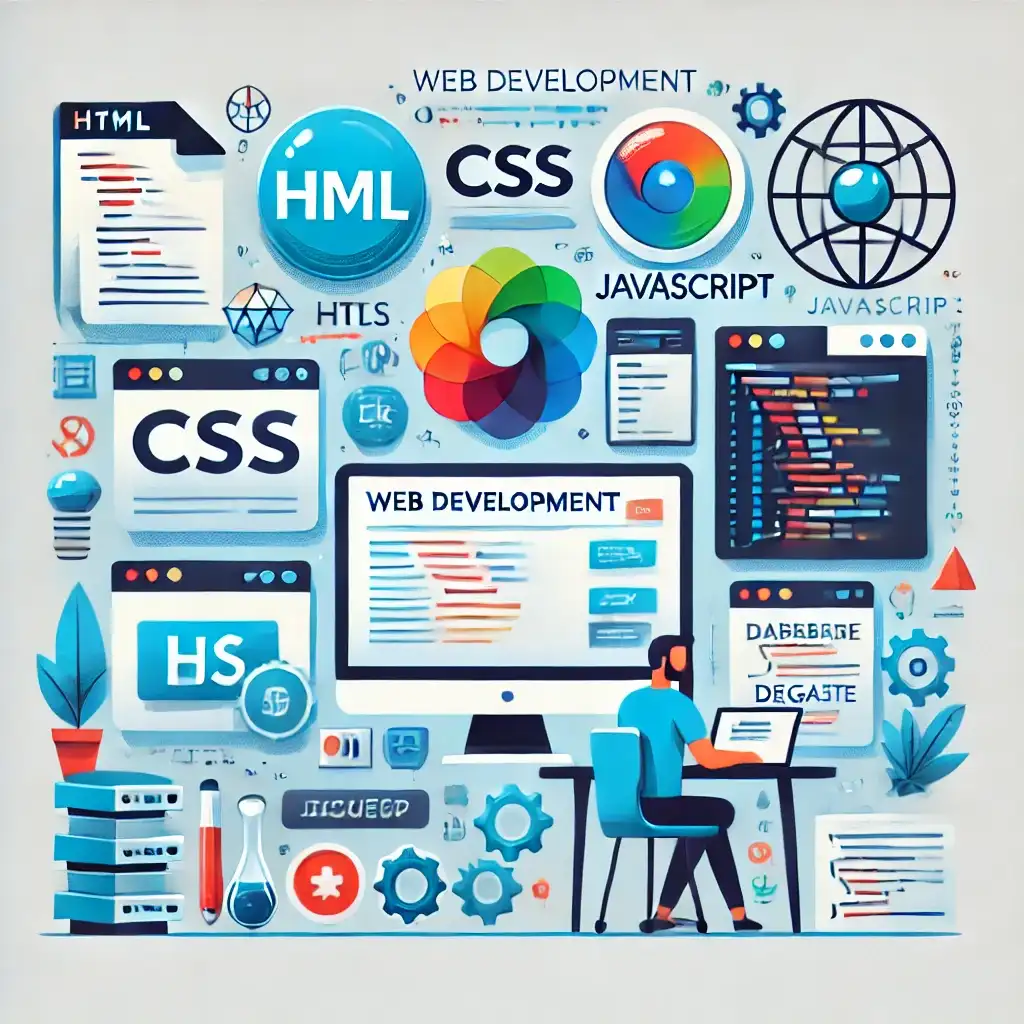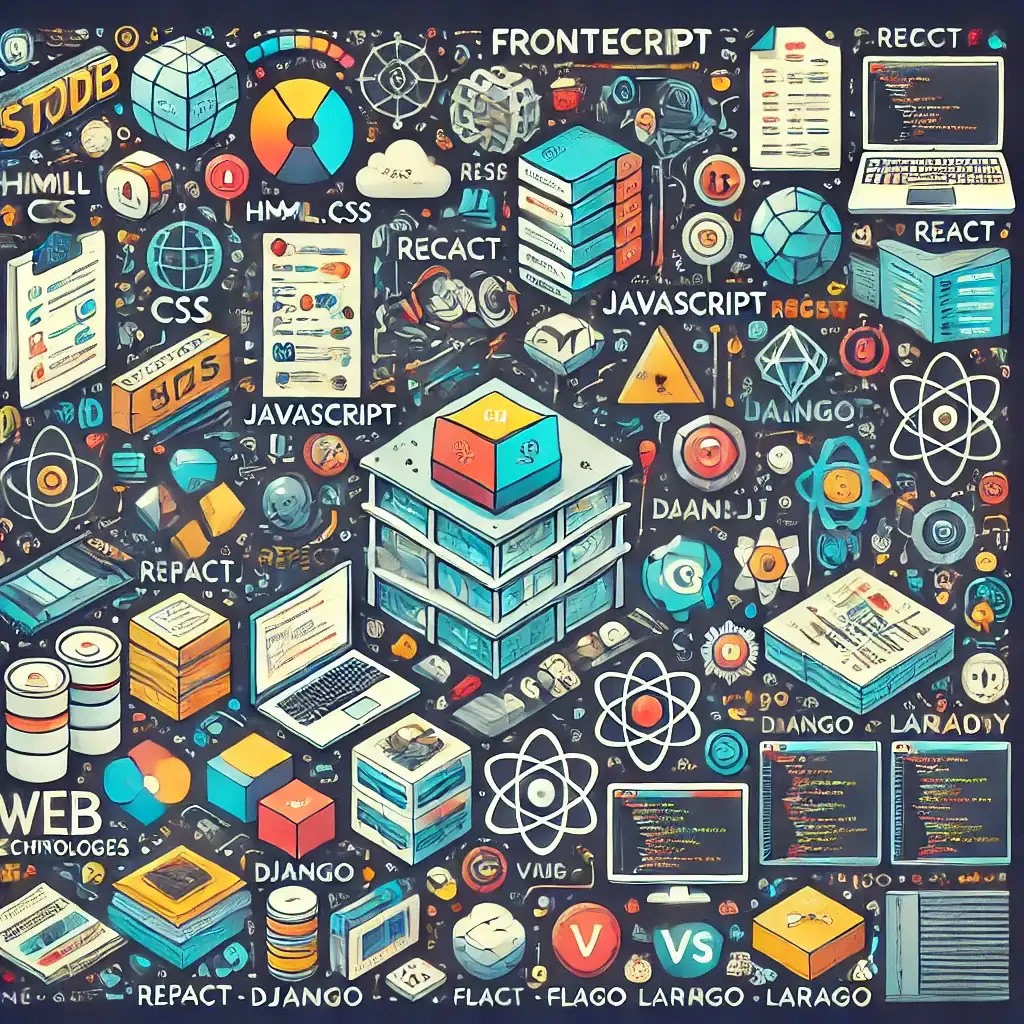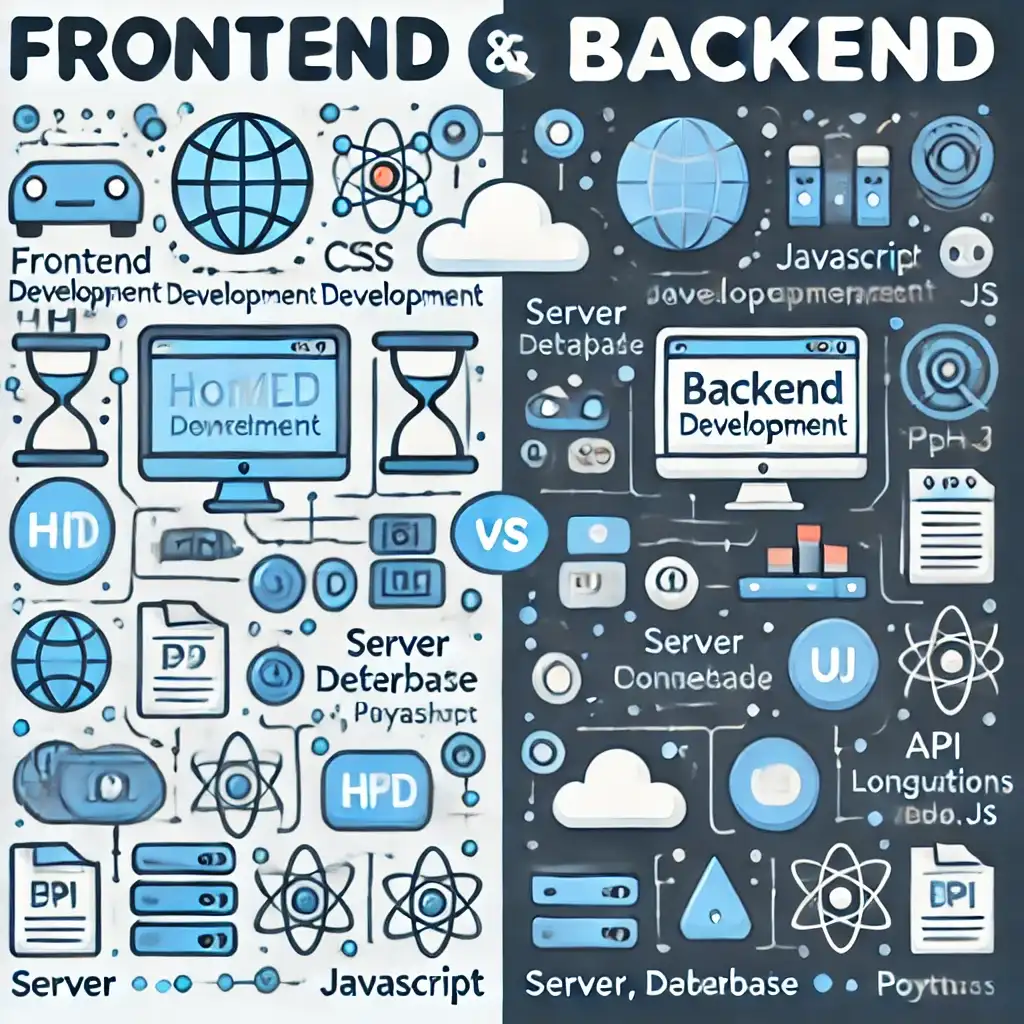
Web development is one of the most in-demand skills in today's digital world. In this article, I’ll share my own perspective on the core components of web development, its different branches, and what it truly means to be a web developer.
1. What is Web Development?
Web development is the process of creating websites and web applications that run on the internet. This process includes various components such as HTML, CSS, JavaScript, and server-side technologies. It involves building both static and dynamic websites. Static sites consist of fixed content, while dynamic sites interact with databases and are shaped by user input.2. Areas of Web Development
Web development can be divided into three main areas:a) Frontend (User Interface) Development
Frontend development refers to the part of the website users interact with directly.- HTML (HyperText Markup Language): The fundamental structure of a web page.
- CSS (Cascading Style Sheets): Defines the visual design and layout.
- JavaScript: Adds dynamic behavior to the page.
- React, Vue.js, Angular: Popular modern frontend frameworks.
b) Backend (Server-Side) Development
Backend development involves the logic behind a website — user input handling, database queries, and API integrations.- PHP, Python, Node.js, Ruby: Commonly used backend languages.
- MySQL, PostgreSQL, MongoDB: Technologies for managing and storing data.
- APIs (RESTful and GraphQL): Interfaces for exchanging data between server and client.
c) Full Stack Development
Full stack developers work on both the frontend and backend of web applications.- Scope: Requires knowledge of UI development, database management, and server-side programming.
- Popular Stacks: MERN Stack (MongoDB, Express.js, React, Node.js) and LAMP Stack (Linux, Apache, MySQL, PHP).
3. Web Development Tools and Technologies
The essential tools and technologies used in modern web development include:- HTML5 & CSS3: Core technologies for web page structure and styling.
- JavaScript and Frameworks: React, Vue.js, and Angular are the core of modern web apps.
- CSS Frameworks: Bootstrap and Tailwind CSS simplify the design process.
- Databases: MySQL, PostgreSQL (relational) and MongoDB (NoSQL) are commonly used.
4. Web Development Workflow
Developing a website generally follows these steps:- Planning: Define project goals and conduct audience analysis.
- Design: Create wireframes and prototypes.
- Coding: Build frontend and backend components.
- Testing and Optimization: Fix bugs and perform performance testing.
- Deployment and Maintenance: Launch the site and maintain it regularly.
5. First Steps to Becoming a Web Developer
Here are the key steps for beginners to get started in web development:- Learn the basics of HTML, CSS, and JavaScript.
- Gain experience by building small projects.
- Learn to use Git and GitHub for version control.
- Explore modern frontend and backend frameworks.
- Understand responsive design, web performance, and SEO.
Related Articles

Recommended Tools for Web Development
0 Comments
Comments ()
No comments yet. Be the first to comment!







